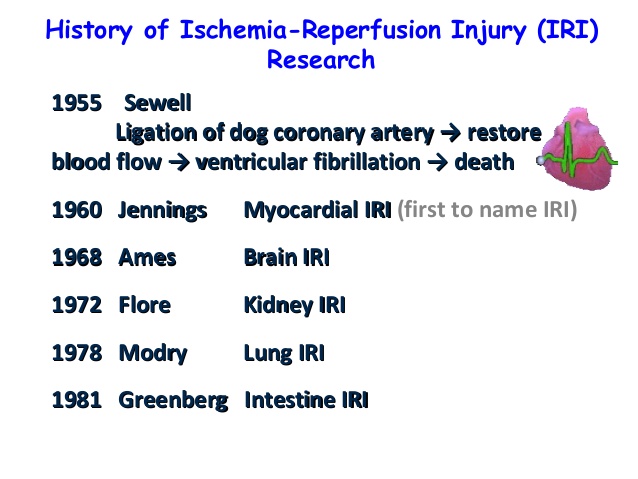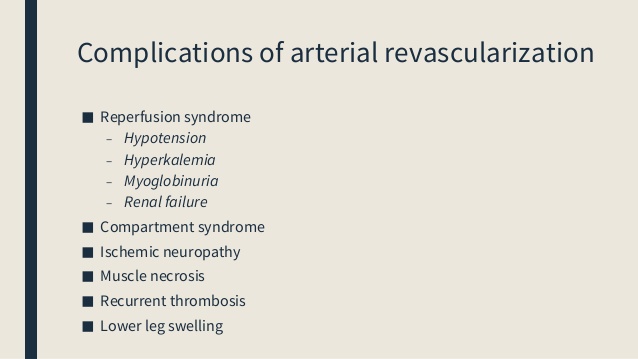Reperfusion injury natural history
|
Reperfusion injury Microchapters |
|
Treatment |
|---|
|
Reperfusion injury natural history On the Web |
|
American Roentgen Ray Society Images of Reperfusion injury natural history |
|
Risk calculators and risk factors for Reperfusion injury natural history |
Editors-In-Chief: C. Michael Gibson, M.S., M.D. [1]; Associate Editor(s)-in-Chief: Shivam Singla, M.D.[2] Anjan K. Chakrabarti, M.D. [3] Kashish Goel, M.D.
Overview
Natural History


Complications

Myocardial stunning: It is mainly defined as an abnormality in the contractile function of myocardium that sometimes persists even after the return of reperfusion and resolution of ischemia. It is mainly due to the release of reactive oxygen species and intracellular calcium overload.
- Myocardial infarction: Irreversible myocyte cell death secondary to reduced oxygen delivery for more than 20-30 minutes, will lead to infarction. Reperfusion helps prevent complete loss of the involved area, however oxidative stress due to this may prevent complete resolution.
- Acute heart failure: Loss of myocardial contractility and systolic dysfunction associated with ischemia/reperfusion injury may lead to the development of acute heart failure. Early reperfusion in the course of STEMI prevents myocardial necrosis and may lead to complete recovery of function.
- Ventricular arrhythmias: Reperfusion of the blocked coronary artery can also precipitate arrhythmias ranging from ventricular premature beats to life-threatening ventricular fibrillation.
Prognosis
Prognosis in CNS patients
- Those patients who are identified and treated early, the prognosis is better along with the decreased incidence of intracranial hemorrhage. Outcomes usually depend on the timely recognition and prevention of precipitating factors. Hypertension management is most important before it can inflict damage in the form of edema or hemorrhage
- The prognosis following hemorrhagic transformation is poor. Mortality in such cases is 3663%, and 80% of survivors have significant morbidity.
- In case of Central nervous system the brain is a very sensitive organ to ischemia and results in death with in 5 minutes of onset of ischemia. Reperfusion is usually beneficial if it is conducted with in very short period of time aster the onset of ischemia but i most of the cases reperfusion leads to the development of cerebral ischemia and hemorrhage resulting in the bad prognosis.
- Ischemia reperfusion injury in kidneys is mainly associated with the development of high morbidity and mortality, worse prognosis with the involvement of corticomedullary junction.
- In CVS patients reperfusion injury is mainly associated with Arrhythmias, myocardial stunning, and myocyte death, which mainly results in the occurrence of Myocardial Infarction with a worse prognosis.